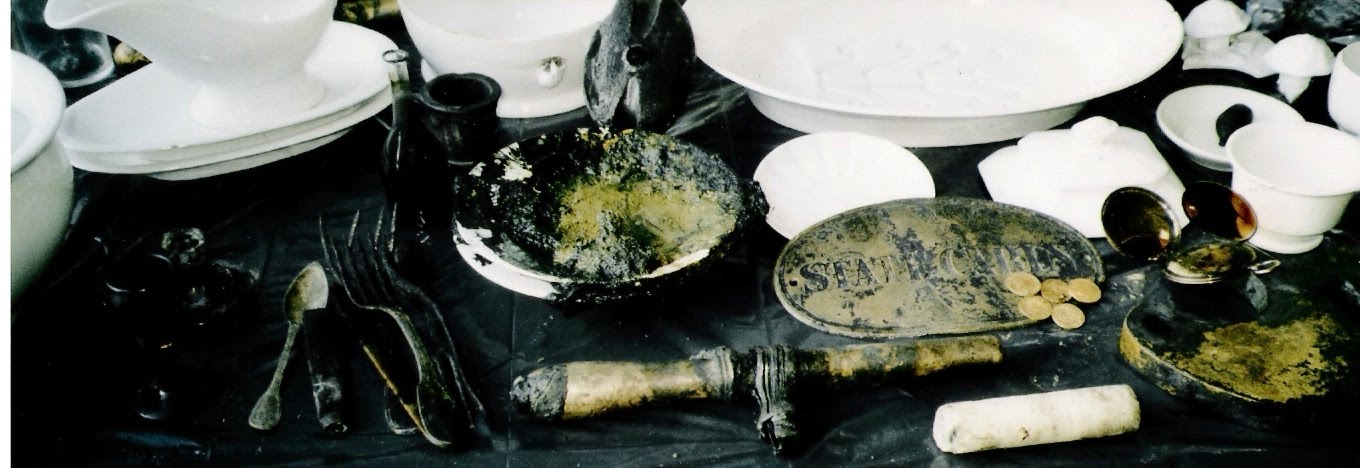Dave Kelley -
There have been many stories written about the sinking of the steamer "Mayflower" boat on Lake Kamaniskeg on November 12, 1912 with three men surviving and nine people drowning. This story takes an underwater perspective as to the state of the boat in the summer of 2003.
The Mayflower was built on the shore beside the Hudson House Hotel in Combermere, Ontario in 1903 by Napoleon Tessier of Hull, Quebec for two brothers, John Charles Hudson and Henry Edwin Hudson. She was built from oak, hemlock and local white pine and was launched and commissioned in June 1904. Her official registered number was 116861, gross tonnage of 58.86 and net tonnage of 38.02, length was 77 feet, breadth 18 feet, depth of 4 feet and height of about 20 feet.It was almost a flat bottom wooden boat designed with shallow draught for navigating the shallow waters over some shoals and sand bars on the Madawaska and York Rivers. Some individuals described her looking like a "scow." She was powered by two cross compound steam engines with the steam supplied by a Fitzgibbon boiler mounted amidships 3 1/2 feet below the deck which was supplied by J & R Weir of Montreal.
Weir also designed the Mayflower. The single rear paddle wheel was set into a cut in the stern and had twelve paddles. A modification to the paddle wheel was made some years after launch as the boat tended to "porpoise' when underway and cause considerable hardship in handling and steering. Two rudders mounted off to the sides and aft of the paddle wheel helped the narrow boat navigate the sharp corners in the Madawaska River especially around the present day Pine Cliff Resort. By the year 1912, the boat was not seaworthy and was not certified by the authorities. She had a previous sinking when it ran into a log "dead head" on the Madawaska River and partially sunk the year before. The boat had not been well maintained in the previous few years. The Mayflower was used for freight, mail and limited passenger service between Barry's Bay and Combermere, Palmer Rapids on the Madawaska River and Havergal on the York River. It also serviced the corundum mines at Craigmont in the Conroy Marsh waterway by towing or pushing barges containing bags of processed corundum to the train at Barry's Bay for shipment to the USA and Europe.She had a crew of three - owner/Captain John Hudson, pilot/wheelsman Aaron Parcher and fireman/engineer Tom Delaney. It had low light level running lights and was not designed to be on the water at night. On Tuesday, November 12, 1912 the Mayflower had made what was to be the last return trip from Combermere to Barry's Bay for the season earlier in the day.Posted via http://batavia08.posterous.com batavia08's posterous
.jpg)
No comments:
Post a Comment